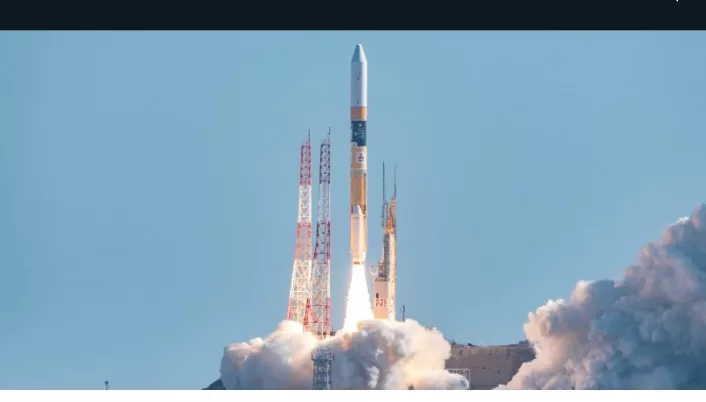Tokyo- In a resolute bid to rekindle its space ambitions following a series of setbacks, Japan’s “Moon Sniper” mission embarked on its journey on Thursday, mere weeks after India’s triumphant lunar landing.
Up to this point, only the United States, Russia, China, and, as of the previous month, India, had successfully executed moon landings, while Japan had grappled with two failed lunar missions—one of public and one of private nature.
The high-stakes spectacle unfolded before a live online audience of 35,000, as the H-IIA rocket roared to life from the southern isle of Tanegashima, carrying the lunar lander, anticipated to make its lunar touchdown early in 2024.
Amidst exuberant cheers and applause in the mission control room, the “SLIM” Moon probe, aptly named for its precision, and the XRISM space research satellite, a collaborative endeavor involving Japanese, American, and European space agencies, gracefully separated from the rocket soon after launch.
The journey to this pivotal launch was fraught with delays, as adverse weather conditions forced three postponements.
The Smart Lander for Investigating Moon (SLIM), affectionately dubbed the “Moon Sniper,” has a striking mission objective—to land within a mere 100 meters of a predetermined target on the lunar surface, a stark contrast to the conventional landing range spanning several kilometers.
JAXA, Japan’s space agency, asserted, “By creating the SLIM lander, humans will make a qualitative shift towards being able to land where we want and not just where it is easy to land. By achieving this, it will become possible to land on planets even more resource-scarce than the Moon.” Remarkably, “there are no previous instances of pinpoint landing on celestial bodies with significant gravity such as the Moon,” added the agency.
On the other hand, XRISM will undertake “high-resolution X-ray spectroscopic observations of the hot gas plasma wind that blows through the galaxies in the universe,” according to JAXA. These observations hold the promise of unraveling the mysteries of mass and energy flow, shedding light on the composition and evolution of celestial objects.
Notably, the lander boasts a spherical probe, developed in collaboration with a toy company, capable of shape-shifting for mobility on the lunar terrain, slightly larger than a tennis ball.
India recently celebrated its momentous success of landing a craft near the Moon’s south pole—a historic achievement for its cost-effective space program. This triumph came on the heels of a Russian probe’s crash in the same region, and four years after a previous Indian lunar mission faltered at the eleventh hour.
Adding to Japan’s lunar tribulations, its previous attempts have often encountered misfortune, including last year’s lunar probe, Omotenashi, part of the United States’ Artemis 1 mission, which was the size of a backpack and would have been the world’s smallest Moon lander had it not been lost.
In a further setback, a Japanese startup, ispace, experienced a failed endeavor in April as it sought to become the first private company to achieve a lunar landing, losing communication with its craft after a challenging descent.
Japan’s space program has grappled with issues concerning its launch rockets as well, with failures plaguing the next-generation H3 rocket in March and the typically dependable solid-fuel Epsilon rocket last October. In a calamitous episode, a test of the Epsilon S rocket, an improved variant of the Epsilon, concluded with an explosion just 50 seconds after ignition in July.
AFP







